| |
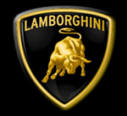
|
|
|
|
||
Ferruccio Lamborghini
|
| Lamborghini Cars Over The Years | |||
| Year | Car Name | Photograph | Number of Cars Made |
| 1993 | 359 GTV (prototype) |
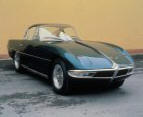 |
2 were built |
|
1964
|
350 GT
|
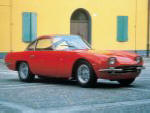 |
125 were made over the years. |
|
1965
|
350 GT
350 GTS
3500 GTZ (prototype)
|
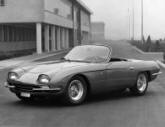 |
About 24 GTS's were finally produced. |
|
1966
|
350 GT
400 GT
400 GT 2+2
Miura P400
400 GT Monza (prototype)
|
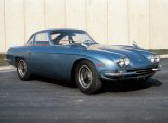 |
250 of the 400 GT 2+2's cars were manufactured. |
|
1967
|
400 GT
400 GT 2+2
Miura P400
Marzal (prototype) |
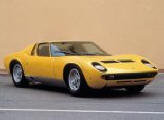 |
764 Miura P400's were made over the years. |
|
1968
|
400 GT 2+2
Miura P400
Espada 400 GT (Series I)
Islero 400 GT
Miura ZN75 (prototype)
|
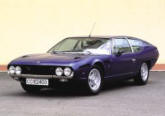 |
1217 Espada's were made. |
|
1969
|
Miura P400
Miura P400 S
Espada 400 GT (Series I)
Espada 400 GTE (Series II)
Islero 400 GT
Islero 400 GTS |
140 Miura P400S's were made. | |
|
1970
|
Miura P400 S
Espada 400 GTE (Series II)
Islero 400 GTSJarama 400 GT
Urraco P250 (prototype)
Miura JOTA (prototype)
|
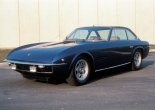 |
About 225 400 GT Islero's were made. |
|
1971
|
Miura P400 S
Miura P400 SV
Espada 400 GTE (Series II)
Jarama 400 GT
Countach LP500 (prototype)
|
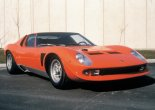 |
150 Miura P400 SV's were made. |
|
1972
|
Miura P400 SV
Urraco P250
Espada 400 GTE (Series II)
Espada 400 GTE (Series III)
Jarama 400 GT
Jarama 400 GTS
|
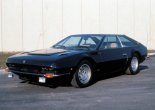 |
327 Jarama's were built |
|
1973
|
Urraco P250
Espada 400 GTE (Series III)
Jarama 400 GTS
Countach LP400 (prototype)
|
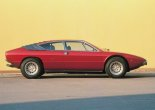 |
676 Urraco's were built |
|
1974
|
Urraco P250
Urraco P300
Espada 400 GTE (Series III)
Jarama 400 GTS
Countach LP400
Urraco P200 (prototype)
|
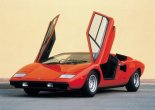 |
1840 Countach's were made. |
|
1975
|
Urraco P250
Urraco P300
Urraco P200
Jarama 400 GTS
Espada 400 GTE (Series III)
Countach LP400
|
||
|
1976
|
Urraco P250
Urraco P300
Urraco P200
Jarama 400 GTS
Espada 400 GTE (Series III)
Countach LP400
Silhouette
|
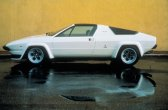 |
55 Sihouette's were built |
|
1977
|
Urraco P300
Urraco P200
Espada 400 GTE (Series III)
Countach LP400
Silhouette
|
||
|
1978
|
Countach LP400
Countach LP400 S
Silhouette
Espada 400 GTE (Series III)
Urraco P300
|
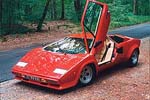 |
235 Countach LP400S's were made |
|
1979
|
Urraco P300
Countach LP400 S
Silhouette
|
||
|
1980
|
Countach LP400 S
Athon (prototype)
|
||
|
1981
|
Countach LP400 S
Jalpa 3500
LM001 (prototype)
|
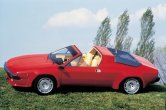 |
410
Jalpa's were built 237 LP400S's were built |
|
1982
|
Countach LP400 S
Countach LP500 S
Jalpa 3500
LM002 (prototype)
|
 |
|
|
1983
|
Countach LP500 S
Jalpa 3500
|
||
|
1984
|
Countach LP500 S
Jalpa 3500
|
A total of about 321 LP500S's were built | |
|
1985
|
Countach LP500 S
Countach 5000 QV
Jalpa 3500
|
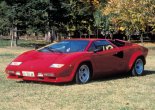 |
610 Countach 5000 QV's were made over the years. |
|
1986
|
Countach 5000 QV
Jalpa 3500
LM002
|
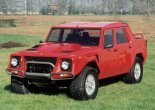 |
328 LM002's were built |
|
1987
|
Countach 5000 QV
Jalpa 3500
LM002
|
||
|
1988
|
Countach 5000 QV
Countach 25th. Anniversary Model
Jalpa 3500
LM002
|
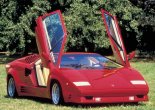 |
Over 657 Countach 25th Anniversary Models were made |
|
1989
|
Countach 25th. Ann.
LM002
|
||
|
1990
|
Countach 25th. Ann.
Diablo 2WD
LM002
|
 |
|
|
1991
|
Diablo 2WD
LM002
|
A total of over 2989 Diablo's were manufactured over the years. | |
|
1992
|
Diablo 2WD
LM002
|
||
|
1993
|
Diablo 2WD
Diablo VT
Diablo SE30 (prototype)
|
 |
|
|
1994
|
Diablo 2WD
Diablo VT
Diablo SE30
LM004 (prototype)
|
 |
135 Diablo SE30's were made |
|
1995
|
Diablo 2WD
Diablo VT
Diablo SV
Diablo VT Roadster
Diablo SE30 Jota
Calá (prototype)
|
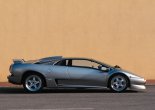 |
15 Diablo SE30 JOTA's were made |
|
1996
|
Diablo 2WD
Diablo VT
Diablo SV
Diablo VT Roadster
|
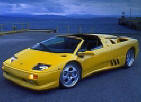 |
|
|
1997
|
Diablo 2WD
Diablo VT
Diablo SV
Diablo VT Roadster
|
||
|
1998
|
Diablo 2WD
Diablo VT
Diablo SV
Diablo VT Roadster
Canto (prototype)
|
||
|
1999
|
Diablo VT
Diablo SV
Diablo VT Roadster
Diablo GT
Diablo GTR (prototype)
|
 |
|
|
2000
|
Diablo VT
Diablo VT Roadster
Diabo VT 6.0
Diablo GTR
|
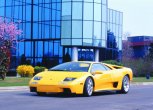 |
Audi took over the factory 32 Diablo GTR's were made |
|
2001
|
Diabo VT 6.0
Diabo VT 6.0 SE
Murciélago
|
Models built in
2001:- 337 units of the Diablo VT 6.0 44 Diablo VT6.0 SE's were made 65 units of the new Murcielago since June 2001 (59 sold to the public, 6 remained property of the factory) |
|
|
2002
|
Murciélago
|
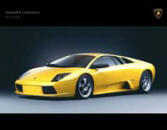 |
Models built in 2002:- 442 Murcielago's |
|
2003 |
Gallardo |
|
Models built in 2003:- 425 Murcielago's 890 Gallardo's |
|
2004 |
Murciélago Roadster |
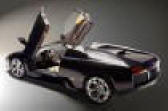 |
Models built in 2004:- 304 Murcielago's 80 Murcielago Roadster's 1294 Gallardo's |
|
2005 |
Gallardo Spider |
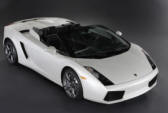 |
|
|
2006 |
Murciélago LP640 |
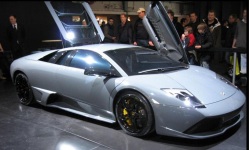 |
|
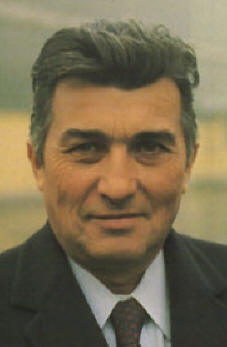 the
world. Any cars, trucks or motorcycles that broke down had to be
repaired on the spot with reused parts. Lamborghini became
known as a wizard at mechanical improvisation and became very much in
demand at fixing engines.
the
world. Any cars, trucks or motorcycles that broke down had to be
repaired on the spot with reused parts. Lamborghini became
known as a wizard at mechanical improvisation and became very much in
demand at fixing engines.